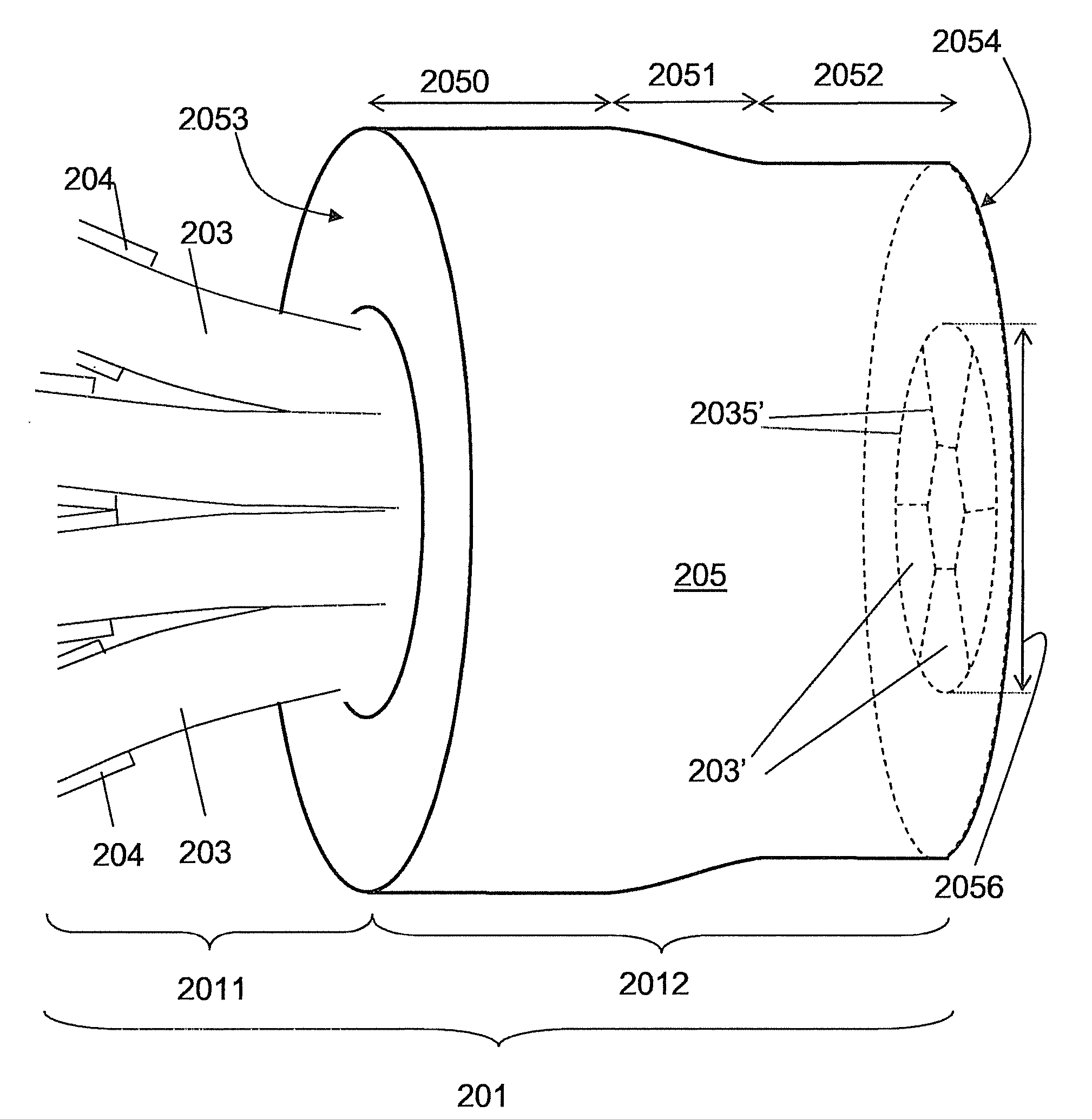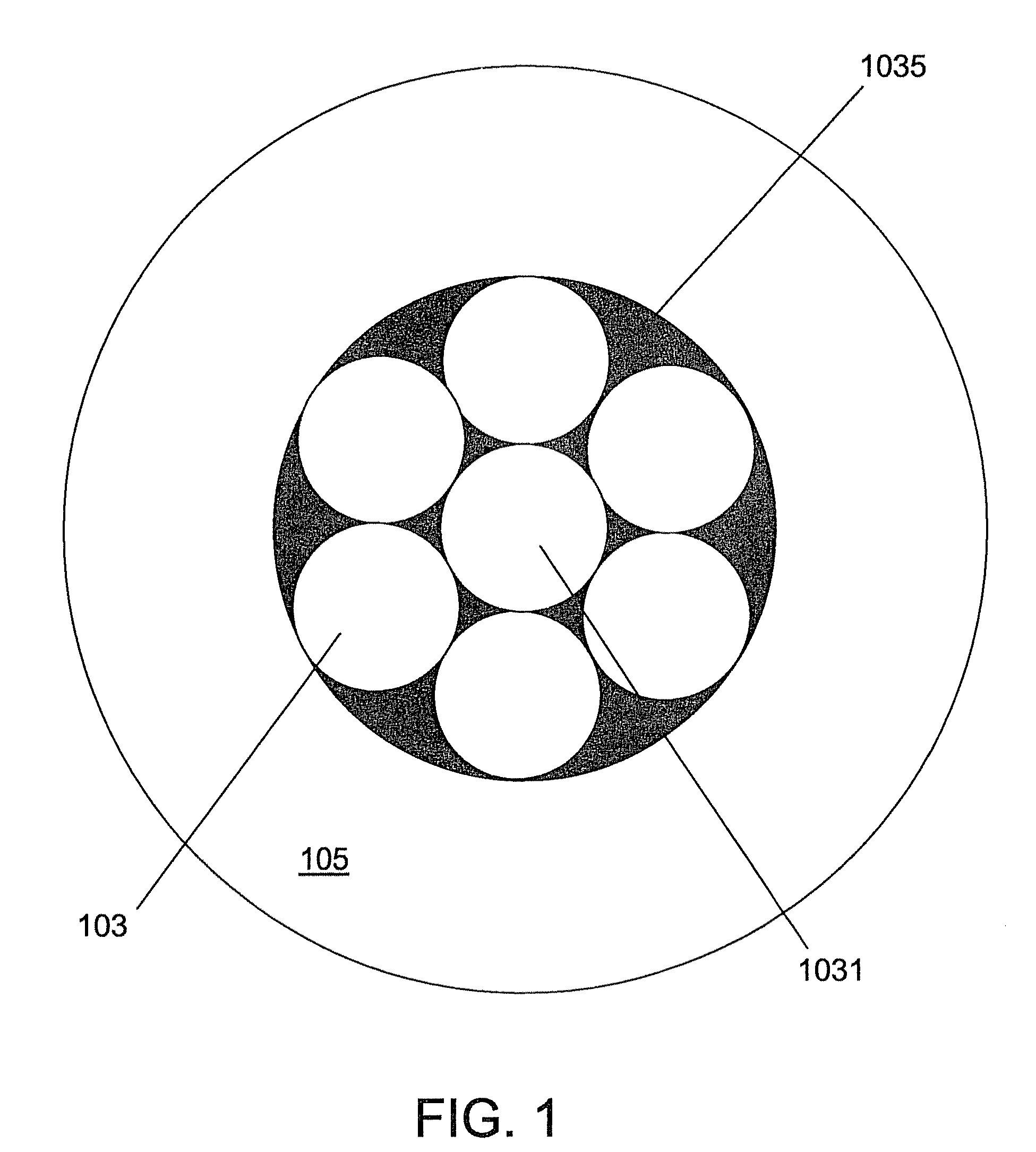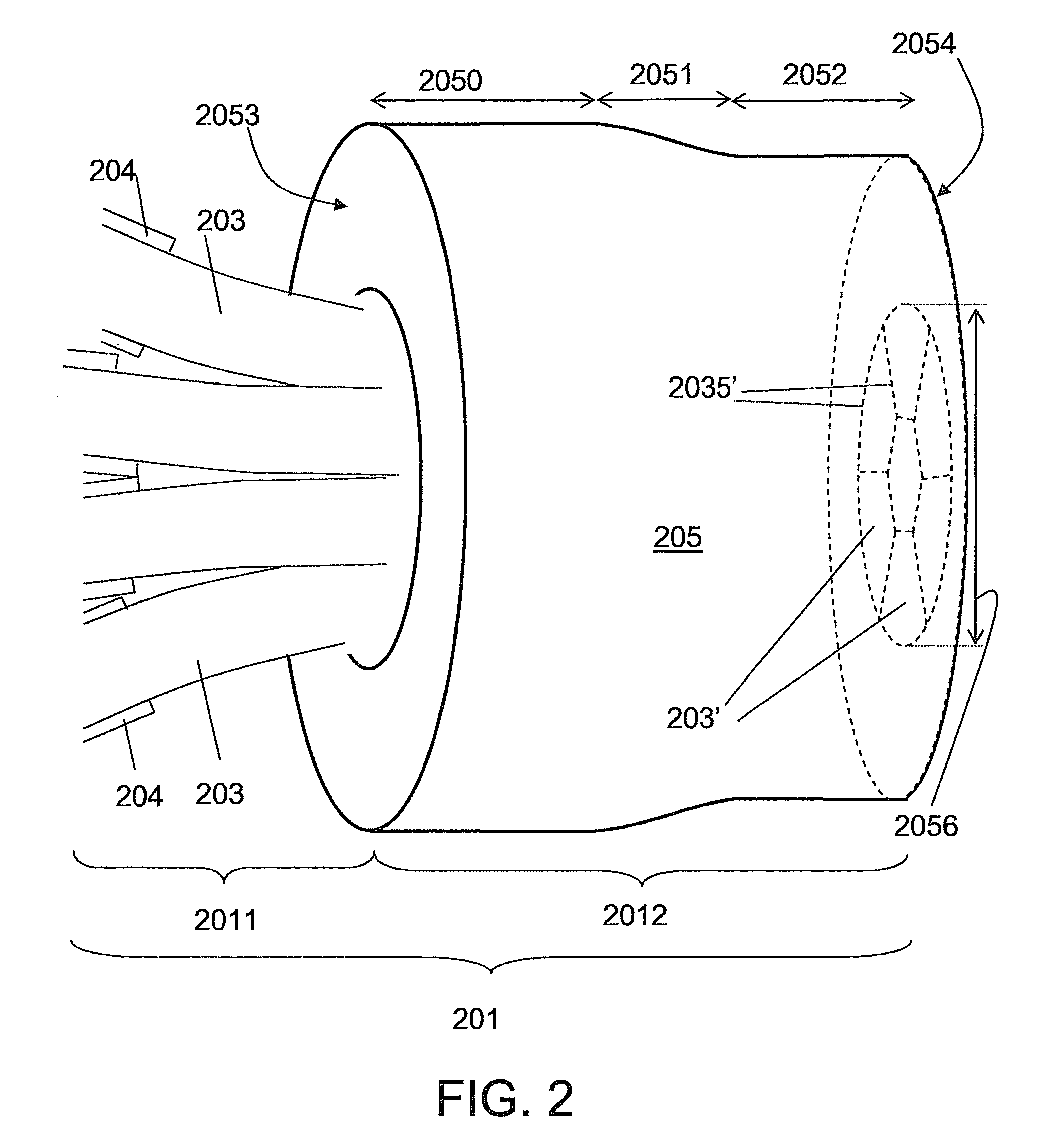Optical coupler, a method of its fabrication and use
a technology of optical couplers and optical components, applied in the field of optical couplers, can solve problems such as performance degradation, and achieve the effects of excellent production reproducibility, easy tapering, and convenient dispensing of input fibre bundles
- Summary
- Abstract
- Description
- Claims
- Application Information
AI Technical Summary
Benefits of technology
Problems solved by technology
Method used
Image
Examples
example 2
An Optical Coupler with Signal Feed Through
[0170]The present example deals with an optical coupler suitable for use in a fibre amplifier, wherein the input section comprises a centrally located signal fibre surrounded by a number of pump fibres and wherein the tapered output section of the optical coupler comprises a centrally located region adapted for guiding the signal light in a single mode and surrounded by a region for guiding the pump light.
[0171]In prior art tapered fibre bundle couplers, the same fibres constitute the cross section at every point from input to tapered output. In the approach described here a single-mode fibre and a number of pump fibres are fused together in a bundle and subsequently cleaved without tapering to create an output face of an input section of the coupler. The fused bundle is then spliced to the output section in the form of a double clad fibre, which is cleaved (to form an input end face) and tapered. The other end of the output section of the ...
example 3
An all-Solid Signal Feed-Through Fibre
[0180]This aspect relates also to the published PCT-application WO 2005 / 091029 and can be used in connection with but is NOT restricted to use in the above described ‘two-part’ optical coupler (but can be used in couplers based on a tapered bundle of fibres).
[0181]The idea is to substitute air-holes in the micro-structured feed-through fibre with solid glass inclusions having lower refractive index than the base material (e.g. silica). This eliminates the problem of holes in the feed-through fibre collapsing when this is incorporated into the fused bundle, tapered and spliced. Collapsing of holes is a major concern since the fusing of pump and signal fibres into a round bundle require excessive heat.
[0182]In its broadest aspect, the idea thus covers an optical coupler for coupling light from at least two input fibres into one output fibre, the optical coupler comprising a microstructured feed-through fibre with solid glass inclusions having lowe...
example 4
Preferred Embodiments of an Optical Coupler
[0202]FIG. 14 shows a two-section optical coupler 1400 according to the invention (FIG. 14a) comprising originally separate input and output sections, which are optically coupled to each other during manufacturing (or use) and examples of cross-sectional views of possible input fibres (FIG. 14b) and output fibres (FIGS. 14c and 14d).
[0203]FIG. 14 shows a number of input fibres 1403, which are loosely assembled over a loose length 1421 and bundled over a bundling-length 1420. These two sub-sections form part of the input section. The input section has an output face, at least comprising the output faces of the individual input fibres. The bundle of input fibres are held together and the output face is optically coupled to an input face of an output section comprising an output waveguide 1406. The optical coupling between input and output sections at the input-output interface 1407 may include a but-coupling, a splice or any other coupling fi...
PUM
| Property | Measurement | Unit |
|---|---|---|
| diameter | aaaaa | aaaaa |
| diameter | aaaaa | aaaaa |
| diameter | aaaaa | aaaaa |
Abstract
Description
Claims
Application Information
 Login to View More
Login to View More - R&D
- Intellectual Property
- Life Sciences
- Materials
- Tech Scout
- Unparalleled Data Quality
- Higher Quality Content
- 60% Fewer Hallucinations
Browse by: Latest US Patents, China's latest patents, Technical Efficacy Thesaurus, Application Domain, Technology Topic, Popular Technical Reports.
© 2025 PatSnap. All rights reserved.Legal|Privacy policy|Modern Slavery Act Transparency Statement|Sitemap|About US| Contact US: help@patsnap.com



